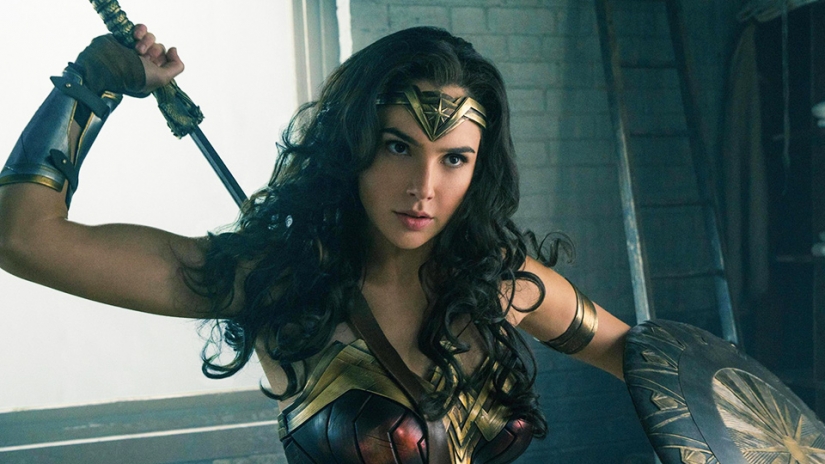Camilla Marotta discusses the pervasive gender complications within the film industry.
2017 started with a lot of good premises for women in cinema. The long-awaited DC movie Wonder Woman was set to be released alongside the Disney adaptation of Beauty and the Beast, starring Emma Watson, that was sure to be a commercial success. These two much-anticipated movies were followed by a promising Indie Festival line-up that seemed to encourage a more female-dominated season. Greta Gerwig’s Sundance darling Lady Bird, starring Saoirse Ronan and Laurie Metcalf; Sofia Coppola’s The Beguiled with an almost all-female ensemble cast; and, the third instalment of Pitch Perfect were making headlines and bolstering a female pride and the blind belief that we were actually moving forward.
Despite this, the last report from the San Diego State University’s Center for the Study of Women in Television and Film depicts a totally different story. The report details a rough 2017 for women on screen, with female-lead movies counting only 24% of past year films’ releases. The numbers are really discouraging and frustrating and put the cinema industry among one of the less appealing workplaces for women.
Data shows that in a film production only 3% of composers are women, 8% are supervising sound editors and 5% sound designers.
The major problem that needs to be addressed is connected to the lack of women in positions of power and involved in the process of movie making. Studies have shown that films directed or produced by women are more likely to feature female characters in leading roles and to hire women in positions such as music, editing and video productions. Female screenwriters and directors are also more competent and invested in telling stories that centre around women. It comes without saying that a male director, even if he had women’s best interests at heart, does not have the same attention that a woman filmmaker would have had in handling stories about women. What needs to be changed, then, in order to have a more equal representation on screen, is the film industry itself.
Female directors, screenwriters and producers are usually overstepped and neglected by what many rightly refer to as the ‘boys’ club’. This male-dominated ecosystem has to be shuttered from the bottom and rebuilt on shared values of equality and equal opportunity. Paradoxically, in a 2012 survey from the Employment Census of the Creative Media Industries, women make-up two-thirds of the student population in creative arts and design courses, but less than half of them actually get to work in the creative industries. This alone attests to the growing interest of women in the creative industries but it also shows that gender bias is still very much alive.
Women are deprived of the possibility of growing and advancing within the industry as most of the time they get relegated to tasks that are generally considered ‘female’s jobs’. Occupational segregation and stereotypes are still well-embedded in our workplace, which contributes to a male-dominated environment that only fosters a gender bias. Data shows that in a film production only 3% of composers are women, 8% are supervising sound editors and 5% sound designers. These numbers depict a dreadful picture of the cinema industry and confirm the bad reputation surrounding it. For a first-hand testimony from women of what it actually means to be a director or filmmaker in a male-dominated industry, there is a brilliant and self-explanatory Tumblr page: ‘shit people say to women directors’. It will leave you tragically sad and amused, but ultimately not particularly surprised.
The major problem that needs to be addressed is connected to the lack of women in positions of power and involved in the process of movie making.
It must be said that some things have slowly begun to change. In the last few years driven and outspoken women have come forward and tried to push behind this gender bias. Oprah Winfrey is the first to come to mind because she produces films centred around female characters. After producing critically acclaimed movies such as Selma, The Butler and Precious, she is now behind the TV show Queen Sugar, filmmaker Ava Duvernay’s latest show that will feature all female directors for each episode. Following in her steps, other actresses have started their own production company, hoping to develop more women-based content. Reese Witherspoon is another good example of this trend. Her production company, Pacific Standard, is committed to producing movies who develop and promote strong-lead female characters, such as the 2014 ‘s Wild, and HBO’s Big Little Lies, that stars an all-female cast, with the likes of Miss Witherspoon herself, Nicole Kidman and Shailene Woodley.
However, apart from these few encouraging examples, the road is still long and insidious. Among 250 films released in 2017, only 18% were directed by women and only 24% of movies were led by female-characters. If 2017 has been a disappointing year for women in cinema, hopefully, 2018 will bring a change of pace in an industry that for way too long has been a man’s world.
Camilla Marotta
(Image courtesy of Den of Geek)

